LEGO’s purpose for the LEGO Ideas program is to encourage and crowdsource new concepts from the LEGO building community that typically might not be produced as mainstream designs from LEGO’s in-house design teams. LEGO Ideas 21318 Treehouse is the 26th entry that has been mass-produced to date and is the largest Ideas set ever released, coming in at a whopping 3,036 elements. Based on the other sets that have been released this year so far, it will be the fourth-largest set for 2019. With such a high piece count and price, at US $199.99 | CAN $269.99 | UK £179.99, LEGO fans might think twice before deciding if this is something that they’re going to fit into their budget and collection, so we’ve got an in-depth review of the set to help you decide.
This original idea was conceived by adult fan of LEGO Kevin Feeser and then designed as a LEGO set by LEGO Designer César Soares. With many other LEGO Ideas finalists are tied to some kind of intellectual property like a nostalgic movie, the concept here is a rare original idea. Let’s dive in and evaluate if it makes the cut in its final form.
The box, instructions, and contents
As expected for a LEGO set with such a high part count, the box is huge and heavy.
It comes with a total of 19 numbered bag sets (a total of 21 bags) and an additional group of 10 numbered bags just for the leaves, bringing the total count to 31 physical bags.
The instruction booklet has 425 pages — well within the realm of possibility for experienced builders to complete in one evening, but you may want to consider taking a few breaks.
With the Treehouse set incorporating some of the new “green” (eco-friendly plant-based) elements, LEGO took the opportunity to remind everyone about this and promote their sustainability efforts on the very first page. As with other LEGO Ideas sets, background and inspiration from the designers take up a page each.
The build
I was expecting to see a build that would make use of a baseplate, but I’m glad it came without one. This meant that the base would have to be constructed with a variety of smaller plates and had a better chance of showing off a little more creativity. I suspect that with the weight of the eventual build, a sturdier construction was simply required. Two Technic lift arms supported by three 4×4 Technic bricks in the middle of the build is a giveaway of how the eventual structure will be supported. With a large amount of 2×4 bricks in dark green, I felt transported back to my younger days when things like 2×4 bricks were the only kinds of bricks that I had to use, applying nothing but my imagination to build.
The exposed base is quickly covered up by more plates forming the landscape and eventual flora surrounding the tree trunk.
The outline of the base is completed with a small stream, a nice addition that wasn’t in the original design.
The underside of the build shows how tightly packed the plates are, with a wide base ready to support the towering tree.
The base of the tree trunk is made up of two doors and more configurations of 4×4 Technic bricks right from the bottom all the way to the top. This configuration and similar constructs continue towards the other parts of the trunk right to the top.
The tree bark is made up of various organic-looking designs for all four sides of the trunk. The tree trunk is built with a hollow center and slots right into the beams shown earlier. The two white beams align neatly to the top of the trunk.
The foundations start to take shape, and you can start to visualise the scale of the trunk compared to the base built first.
Notice how the exposed corners use the Bar with 1×1 Round Plate. This clever use provides the required angles to capture the cylindrical shape of the trunk. Technic liftarms are hidden behind long plates and slot into the Bar with 1×1 Round Plate.
The 4×4 structure with bars sticking out is the base formula that you will be using throughout the build. Here are two of many other configurations that you’ll encounter. This shaping reminded me of the Saturn V build process where the perfect cylindrical design was needed. In this case, due to the nature of the tree’s organic form, the imperfections complement the build.
Like many Ideas sets, this set does not include any stickers — only printed tiles. We encounter the first printed element in the form of a carving on the tree with the initials of the original designer, Kevin Feeser, and an inspirational quote to “Build your dreams”.
The tree trunk and branches are all similarly designed with slight variations to create the illusion of randomness, yet they all have the same core design to bear the weight of the three cabins that will be supported by these branches.
During the build, once in a while there’s a little fun and imagination as your mind wanders, just like when this swing was placed — ah, childhood memories!
As we build along, we encounter another printed element. The 2×2 round tile with wood grain pattern at the side of the tree shows where a branch was cut off during construction of this treehouse. This isn’t a new element, but it is a nice detail to remind us that we’re dealing with tree branches. It would have been nice to include more of these but alas, this build only comes with this one.
The cabin builds
The Master Bedroom reminded me of decorating the recent LEGO Wild West Saloon set from Bricklink’s AFOL Designer Program, with so many brown bricks and detailing in a tight space. There are a couple of accessories hidden throughout the build. This particular one has a pair of scissors hidden beneath the bed, representing Kevin’s day job as a hairdresser. Of course, there’s also folklore that says sleeping with scissors under the bed is a way to cure nightmares.
Detailing in a tight space is always interesting to build, as you take time figuring out what each part represents and also the possible stories play in your head as it comes alive. What’s a letter doing on the table? I don’t know, but the flower pot by the window is simply charming.
A printed compass shows up as an accessory. Once again, it’s not something unique to this set, but a nice addition in keeping with the set’s theme. There are also few other printed accessories that we’ll let you discover as you go along, even beyond the additional ones pictured here. However, they have all been featured in various other sets and are not unique.
Hinge plates are placed both at the bottom and after the walls are built for the cabin to retain its shape.
At this stage, the cabin is ready to be placed on the branch. It requires a bit of a careful alignment, although the instructions do not really give an underside guide for the placement. If you’re building this with a younger one, this is where they will need some assistance.
The next cabin to be built is the bathroom. Tiled with sand green and with a modern-looking commode installed, I can’t and don’t want to fathom what kind of plumbing was involved to get waterworks functioning high up in a treehouse cabin.
Other amenities in the facility include a tub for bathing with piping constructed as a showerhead, along with a sink.
Upon further construction, the mystery of the water source is solved with the reveal of a barrel as a catchment source. On the far end, a wind-up crane system with a hook is ready for action to retrieve goodies from the ground level.
I noticed that the bathroom cabin has the most number of windows attached, as opposed to the master bedroom. A counter-intuitive design perhaps, but a good idea if windows need to be opened for ventilation and to let in fresh air after certain activities of the second numeral have been performed. I’d say this was well thought out. The exterior walls and color themes with the octagonal shape are maintained, matching the master bedroom. At a glance, besides the barrel for the catchment, there isn’t really any other giveaway to tell that this is a bathroom.
Once again, careful placement and securing of the cabin on the tree trunk is a necessity. It’s nice to start to see the theme coming alive.
A treetop walking path is built between the yet-to-be-placed cabin at the bathroom, using a stair-case like structure. My imagination goes wild once again thinking of happier times in rooftop cabins and chases from one platform to another via wobbly wooden paths.
The third and final cabin is a smaller sized kids bedroom, one again utilising the same octagonal shape.
A blue bunk is built above the yellow bunk. The colors are playful and appropriate for a kids bedroom.
A few printed elements decorate this cabin. There’s a treasure map, placed on the wall beside the lower bunk, a wooden panel, as a decoration outside the cabin and a page from a book for the top bunk.
The birds-eye view of this room gives a good view of the cozy cabin.
The kids’ cabin is the only one to feature a balcony.
Things begin to take shape with all three cabins mounted. 
With the cabins completed, the remaining pieces for the man-made structure are the rooftops. Almost shaped like turtle shells, each one is built similarly but with slight deviations to bring a level of randomness.
The inside colors of red, tan and green correspond to each of the cabins via the similarly colored indicators at the top of the cabins, making it easy to replace the roofs without unnecessary fumbling. The roof structures are not attached but merely placed on top for easy removal for play access.
Now the only remaining part is the top of the trunk and the leaves and a few extra details. The final build looks like a tree stump that has no interesting features, and rightfully so since it will be mostly hidden.
The build is beginning to look quite impressive indeed.
A few other features like this curved staircase are added to provide access to the cabins.
Little features are built around the trunk to give the scene some life, such as this little campfire.
And at the base, there’s a picnic area furnished to enjoy a scrumptious meal with the family.
At last, all that’s left are the leaves and branches to complete the final look. There are three levels of branches. The lower and the centre branches have more leaves attached with a larger trunk as below. As the foliage thins at the top, the upper branches are a little smaller. Each level of branch consists of four spans, for a total of 12 branches to give the desired canopy effect.
The build and placement of the leaves are mundane and I’d say the least interesting part of the build. I could not wait to finish it as it seemed to go on and on almost forever.
However, I would say that there’s just the right amount of leaves to give it that sparse look with just enough to give a peek at the rooftops of the cabins.
Interestingly, LEGO designers provided a second set of autumn leaves to change the season. Rather than being something that’s easily swapped, however, the leaves are built into the branches as you go, so changing seasons requires rebuilding all twelve branches. My advice is to decide early on which color theme you’re going after. There was very little motivation for me to go through the whole placement of leaves all over again. It’s really not something I would enjoy going through again. It would definitely have been nice to be able to swap out the branches with a single fixture. The added advantage here is that the additional autumn leaves extend the play value and display, plus you get lots of extra parts if you intend to use only one set.
The Minifigures
A family of four minifigures is supplied – Mom and Dad and brother and sister. Mom is the only figure with a dual face, with one smiling and the other winking. Brother and Sister are short minifigures without bendable legs, dressed in camping gear. In general, the figures in this set are nothing to get excited about, but they’ve been dressed up to fit the theme for a very down to earth family camping event.
Mom sports a short hairdo and Dad is dressed up in a simple outfit.
Brother and Sister sport happy faces and sis has a cap affixed to her hairpiece.
Play features
There are various tiny builds to add to the play value, from the swing to the ladders and the picnic tables and the occasional odd and ends. Having said that, they’re just tiny builds that don’t really add up but provide brief delights as they surface during the build.

Although the cabin roof was designed to be removable, once the leaves were layered, it became less accessible and was actually an obstruction to role-play the minifigures in treehouse play situations. Thankfully, the designers thought of this and you can remove the top segment of trunk, taking with it all the branches and leaf elements and easily revealing the cabins for access. 
Summary
I found that the treehouse consisted of a high part count that had little to show for great details at the end. No doubt, the towering structure is grand and elegant at a glance but the build has quickly fleeting high and a steep low the very end with the repetitive placement of the tree leaves. The rollercoaster-like ride did not leave me wanting more. The height of enjoyment builds up to the construct of the internals of the three cabins, almost like an organic, vertical modular theme, but afterwards it felt like a toil to get the tree completed.
Some sets have a great build process with a great display to show for at the end. Some make a great display but lack a great building journey. I’d say this is one of the latter, for me at least.
What I do recommend if you’re still undecided, is to a visit to the LEGO store and if possible get some hands-on experience. I recommend this because as much as the photos or box art may be great looking, the treehouse is a 360-degree build with substantial height. There isn’t a single facade to look at or admire as with a building, and the box art isn’t able to capture the view that you get from seeing the real thing with all cabins visible. The best experience is to poke your viewpoint under the tree, then above the trees, and then perhaps a sneak peeks into the cabins. Lift up the top branch segment and explore.
Having said all that, I think this set is perfect for a family activity for parent-child bonding. There are sufficient building skills required that it will likely require adult assistance, while the kids could stick with the simpler sections.
Last but not least, it will still make a great talking piece as a display on a shelf as its an organic construct that we don’t get to see very often with LEGO sets. Disclaimer: The reviewer has never had the opportunity of owning or living in a real treehouse and hence may not evoke the subtle nostalgic and heartstrings of a stunning treehouse, and said reviewer therefore is willing to accept treehouse invitations for a weekend getaway in order to rectify this in the future.
The LEGO 21318 IDEAS Treehouse will be available in LEGO stores and the LEGO Shop Online tomorrow, July 24, US $199.99 | CAN $269.99 | UK £179.99 and may also be available from third parties on Amazon, Bricklink and eBay.
The LEGO Group sent The Brothers Brick an early copy of this set for review. Providing TBB with products for review guarantees neither coverage nor positive reviews.














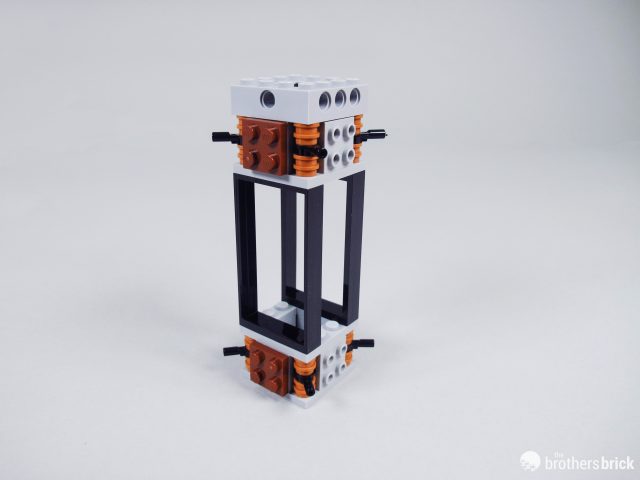




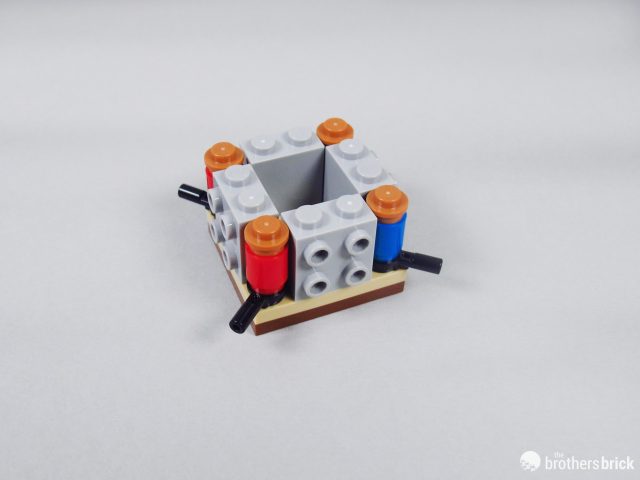













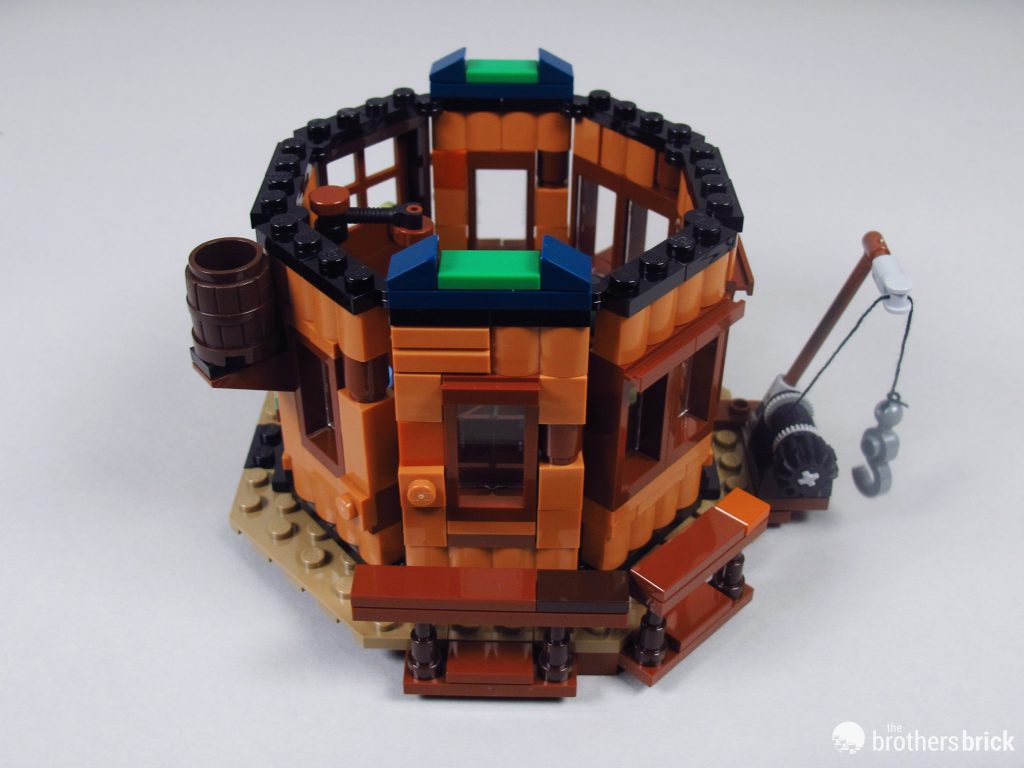













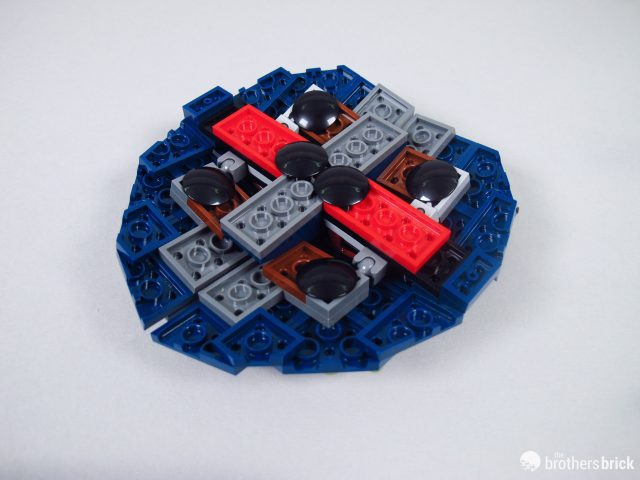





















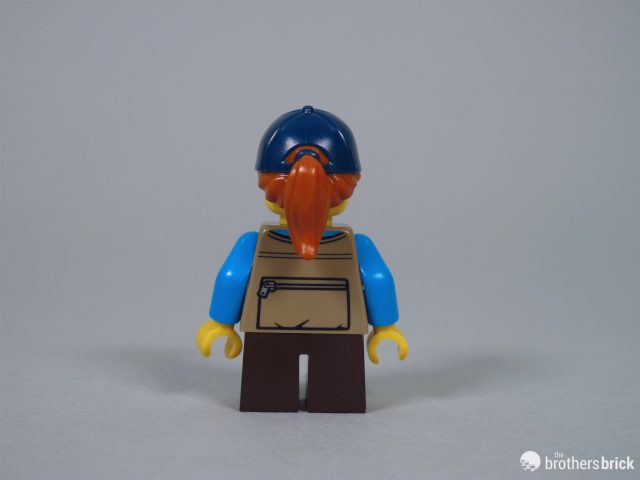






















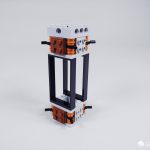


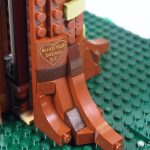





































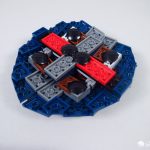


































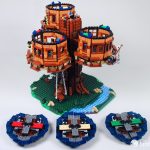

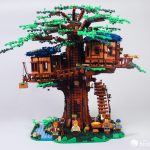











Terrific, thoughtful review as always. I was considering getting this set for our forest background and I appreciate your insights.Thanks for this.